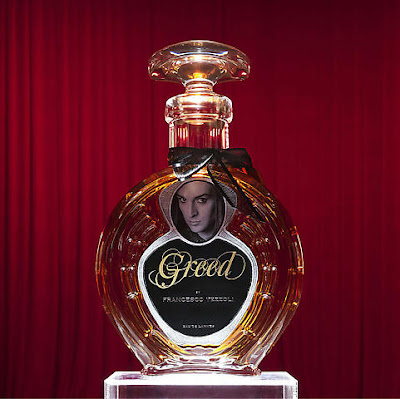
"The fish is a perfect form." —Frank Gehry
Architect and designer Frank Gehry has long been inspired by fish. He has created buildings, statues and even jewelry for Tiffany's using the form of a fish as the basis for his designs.

above: Gehry's fish, Standing Glass Fish Frank Gehry, 1986, Minneapolis Sculpture Garden, Minneapolis, MN

above: Gehry's "Fishdance" sculpture for a restaurant in Kobe, Japan (1987).

above: Gehry's Fish structure at the Olympic Port in Barcelona

above: a necklace and earrings for Tiffany & Co by Gehry
Gehry has always experimented with sculpture and furniture in addition to his architectural pursuits, coaxing inventive forms out of unexpected materials, from the Easy Edges (1969–73) and Experimental Edges (1979–82)—chairs and tables carved from blocks of industrial corrugated cardboard—to the Knoll furniture series (1989–92), fashioned from bentwood. The Fish Lamps evolved from a 1983 commission by the Formica Corporation to create objects from the then-new plastic laminate ColorCore.

above: Various Gehry fish lamps from the past four decades
After accidentally shattering a piece of it while working, he was inspired by the shards, which reminded him of fish scales. The first Fish Lamps, which were fabricated between 1984 and 1986, employed wire armatures molded into fish shapes, onto which shards of ColorCore are individually glued, creating clear allusions to the morphic attributes of real fish.



above: Frank Gehry, Low White Fish Lamp, 1984, ColorCore, silicone, wood, Collection of Fred Hoffman and Frank Gehry, courtesy of Fred Hoffman Fine Art., Image credit: Christine McMonagle
Since the creation of the first lamp in 1984, the fish has become a recurrent motif in Gehry's work, as much for its "good design" as its iconographical and natural attributes. Its quicksilver appeal informs the undulating, curvilinear forms of the Guggenheim Museum in Bilbao, Spain (1997); the Jay Pritzker Pavilion in Chicago (2004); and the Marqués de Riscal Vineyard Hotel in Elciego, Spain (2006) as well as the Fish Sculpture at Vila Olímpica in Barcelona (1989–92) and Standing Glass Fish for the Minneapolis Sculpture Garden (1986).

above: Architect Frank Gehry with the orange fish lamp, a trademark of his work in the 1980s. (©1991 Roger Ressmeyer; Fish Lamp © Frank Gehry & New City Editions/CORBIS)

above: an early fish lamp by Frank O. Gehry, cast glass, Courtesy of Joan and Jack Quinn, Beverly Hills, CA
Now, Gagosian Gallery is pleased to present Frank Gehry's Fish Lamps. The exhibition will be presented concurrently in Los Angeles and in Paris.

In 2012 Gehry decided to revisit his earlier ideas, and began working on an entirely new group of Fish Lamps. The resulting works, which will be divided between Gagosians Los Angeles and Paris, range in scale from life-size to out-size, and the use of ColorCore is bolder, incorporating larger and more jagged elements. In Los Angeles, Gehry is also designing the installation for the Fish Lamps, following his inspired design for the Ken Price exhibition at LACMA earlier this year.

above: Untitled (Los Angeles III), 2012–13, Metal wire, ColorCore formica and silicone, 44 x 16 x 55 inches (111.8 x 40.6 x 139.7 cm), courtesy of Gagosian Gallery
The softly glowing Fish Lamps are full of whimsy. As individuals or groupings of two and three, some are fixed to poles or wall sconces, while others can be placed on any existing horizontal surface. Curling and flexing in attitudes of simulated motion, these artificial creatures emit a warm, incandescent light. This intimation of life, underscored by the almost organic textures of the nuanced surfaces, presents a spirited symbiosis of material, form, and function.




"I kept drawing it [the fish] and it started to become for me like a symbol for a certain kind of perfection that I couldn't achieve with my buildings." —Frank Gehry
This 1984 fish lamp by Gehry has an estimated auction value of $90,000-$120,000:


above: Fish Lamp, New City Editions, Canada/USA/USA, 1984, Colorcore Formica, stained and lacquered plywood, glass, 40 w x 24 d x 37.5 h inches (image courtesy of Wright20)
The first Fish Lamps were shown in "Frank Gehry: Unique Lamps" in 1984 at the former Robertson Boulevard location of Gagosian Los Angeles.
Images of last week's opening exhibit at the Gagosian, with photos by Brad Elterman can be seen here.
Frank Gehry - Fish Lamps
January 11 - February 14, 2013
456 North Camden Drive
Beverly Hills, CA 90210
T. 310.271.9400 F. 310.271.9420
losangeles@gagosian.com
Hours: Tue-Sat 10-6
About Frank O. Gehry:
One of the most celebrated architects living today (and a Prtiker Prize winner), Gehry's career spans five decades and three continents. Known for his imaginative designs and creative use of materials, he has forever altered the urban landscape with spectacular buildings that are conceived as dynamic structures rather than static vessels.
Frank Gehry was born in Toronto in 1929. He studied architecture at the University of Southern California and urban planning at the Harvard Graduate School of Design. His drawings, models, designs, and sculpture have been exhibited in major museums throughout the world. Among his most celebrated buildings are the Vitra Design Museum, Weil am Rhein, Germany (1989); the Guggenheim Museum, Bilbao, Spain, (1997); and the Walt Disney Concert Hall, Los Angeles (2003). Awards include the Pritzker Architecture Prize (1989); the Wolf Foundation Prize in Arts (1992); the Praemium Imperiale in Architecture from Japan Art Association (1992); the Dorothy and Lillian Gish Prize (1994); the National Medal of Arts (1998); the Gold Medal from the American Institute of Architects (1999); the Gold Medal from the Royal Institute of British Architects (2000); and the Lifetime Achievement Award from Americans for the Arts (2000). "Frank Gehry, Architect," the most comprehensive exhibition of his work to date, was presented at the Solomon R. Guggenheim Museum in New York in 2001. Gehry's latest building, the Louis Vuitton Foundation for Creation in the Bois du Boulogne, Paris, will be completed in 2013.
information courtesy of the Gagosian Gallery press release, images courtesy of The Jewish Museum, Wright20, Gagosian Gallery, Sotheby's, Christies

























